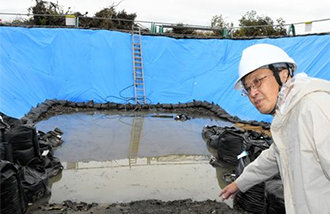Japan in Ten Years of Slump and a Sharp Drop in Real Estate Prices
Japan in Ten Years of Slump and a Sharp Drop in Real Estate Prices
Posted October. 13, 2003 22:36,
The skyrocketing real estate price is a serious problem. But the burst of the bubble, reflecting the sharp drop in the prices, is even more serious than that.
There are growing worries about the burst of the bubble as the warnings came out that the real estate prices of Gangnam area in Seoul are ballooning wildly.
Cases that the sharp rise and fall in real estate prices saddled an enormous burden on the economy can be found in many countries including Japan and the United States.
On that matter, the International Monetary Fund (IMF) warned that, after analyzing the cases of real estate bubble bursting in developed countries after the World War II, the bubbles gave adverse effects to the economy in most cases.
Japans lost 10 years: Japan has not been able to get out of an economic slump which has plagued them for 10 years after its GDP growth rate turned negative in the fourth quarter of 1991, and only until last year did the GDP growth rate turned positive. The major cause of this long economic slump was the plunge in real estate prices accompanied by a fall in stock prices, which together constitutes the major classes of investment assets.
In particular, the real estate price increased by more than three times for about four years from 1986 until 1990, and then dropped sharply to half the value of its peak until recently. Some of the commercial estate prices in center of Tokyo are now less than 30 percent of its peak value. The amount of the drop in real estate prices is about 1,000 trillion yen, which is 20 times more than the GDP of Korea in 2002 (596 trillion won).
The sharp drop in the prices caused major troubles to Japanese financial institutions, which again caused credit crunch, leading to difficulties in financing of the companies, leading to a decrease in facility investments, and finally leading to a deepened economic slump one after another in vicious circle. Furthermore, all of the seven financial institutions specializing in the housing market suffered, and most of the real estate investment companies also failed.
US Savings and Loans Institutions (S&L) debacle: The U.S. also experienced a real estate bubble burst in its southwestern areas including Texas in the 1980s. Due to the high oil price after the second oil shock (1979) and an economic stimulus package which concentrated on the domestic demands by the Ronald Reagan Administration, the southwestern U.S. areas including Texas, in which the oil industry played a major role, had a booming economy. In this period, they saw housing prices rise to 175 for detached houses and to 155 for apartment houses respectively (assuming a price of 100 in late 1979).
But after the sharp drop in the prices, apartment house prices fell down to less than 80 and detached house price to 130. With this decrease, about 3,000 of S&Ls quickly failed, and 500 of them became insolvent in 1987. Finally as of 1993, 1,300 of S&Ls bankrupted.
The warnings from the IMF: As the IMF analyzes the cases of bursting real estate bubbles in developed countries since after World War II, the fall of the prices was 30 percent on average, considerably lower than the 60 percent drop for stock market values. But the adverse influence of the real estate market on the economy was much more serious than the stock market.
On average, the stock market restored its health in about two and a half years after the bubble burst, while it took four years of slump to come back to normal for real estate markets. Furthermore, the social loss by the real estate bubble was 8 percent of GDP, and in most cases the bubble caused an economic downturn. The amount of budget deficits to restore the required capital of failing banks in the forms of public funds was also enormous.
Choi Young-il, a bank analyst of Standard and Poor`s (S&P), said, "The sharp drop in real estate prices deteriorates the growth rate by lowering the capacity to service the debts of not only financial institutions but also real estate related industries (construction industries, construction resources industries, and related service industries). Therefore, it is best to keep the bubble away from ballooning in advance."
Yong-Ki Kim Jae-Seong Hwang ykim@donga.com jsonhng@donga.com







